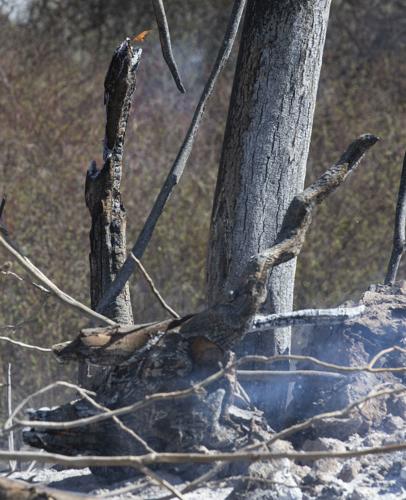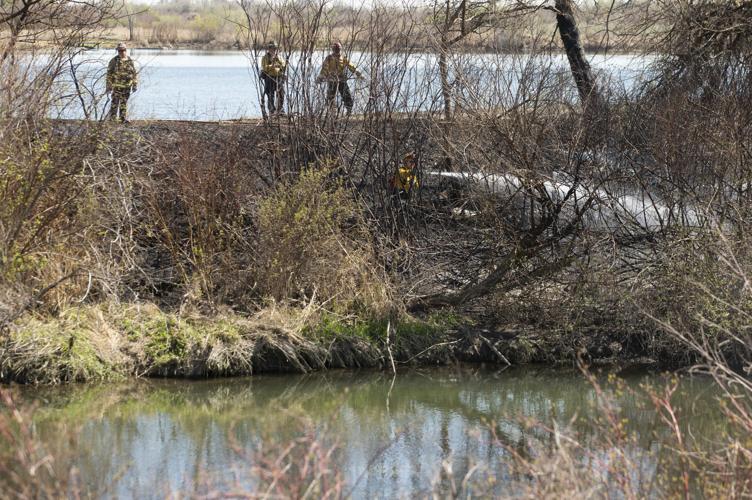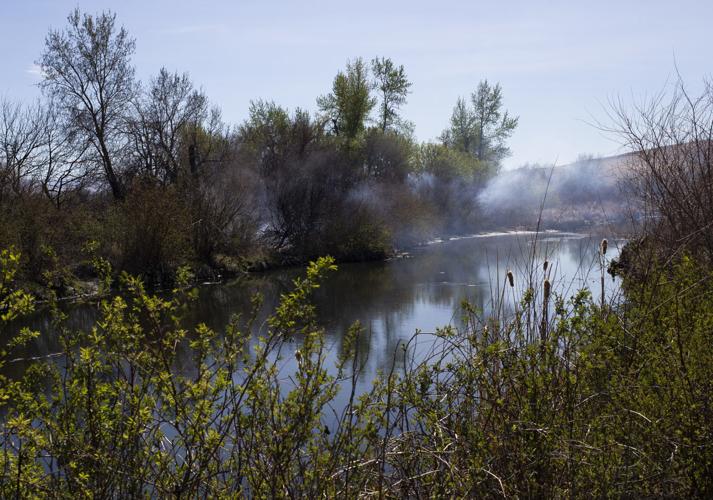
The Echoes of Resistance: Toppenish Creek and the Unsung Legends of America
America’s tapestry of legends is vast and vibrant, woven with threads of pioneering spirit, larger-than-life figures, and epic struggles. From the tall tales of Paul Bunyan to the romanticized outlaws of the Wild West, these narratives often celebrate triumph, innovation, and the march of progress. Yet, beneath the familiar surface of national myth-making lies a deeper, more complex stratum of legends – those born from conflict, from the clash of cultures, and from the fierce, often tragic, resistance of indigenous peoples. These are the stories that challenge comfortable narratives, forcing us to confront the true cost of expansion and the enduring power of memory. One such profound, yet often overlooked, legend is etched into the very soil of the Pacific Northwest: the Battle of Toppenish Creek, a pivotal moment in the Yakama War, which stands as a testament to strategic brilliance, devastating loss, and the unyielding spirit of Native American defiance.
To understand the legend of Toppenish Creek, one must first cast their gaze back to the mid-19th century, a period of explosive growth and insatiable ambition across the American West. The year is 1855, and the Pacific Northwest is a cauldron of competing desires. The California Gold Rush, barely five years past its peak, had sent ripples of prospectors and settlers northwards, igniting a similar fever in the newly formed Washington Territory. Promises of quick wealth lured thousands, but these dreams invariably collided with the established realities of indigenous life. For millennia, the Yakama Nation and their confederated tribes had thrived in the fertile valleys and abundant fishing grounds of what is now central Washington. Their lives were intimately connected to the land, their traditions deeply rooted, and their sovereignty unquestioned by themselves.
Enter Isaac Stevens, the ambitious and driven first governor of Washington Territory, who embodied the era’s manifest destiny ethos. Tasked with clearing the way for American settlement and securing land for a transcontinental railroad, Stevens embarked on a series of aggressive treaty negotiations. In 1855, he convened the Walla Walla Council, bringing together an unprecedented gathering of tribal leaders from across the region. Under immense pressure and often through questionable tactics, many tribes were coerced into ceding vast tracts of their ancestral lands, consolidating them onto reservations. But not all were willing to sign away their heritage.

Among the most vocal and powerful resistors was Kamiakin, a principal chief of the Yakama Nation. A man of formidable intellect, strategic acumen, and deep spiritual conviction, Kamiakin foresaw the catastrophic consequences of these treaties. He understood that the insatiable hunger for land, fueled by the gold rush and settler expansion, would ultimately mean the destruction of his people’s way of life. Kamiakin, along with other far-sighted leaders, recognized the need for unity among the disparate tribes to effectively resist the encroaching tide. He began forging alliances, creating a confederation that would soon be tested in the crucible of war.
The spark that ignited the conflagration was, as so often happens, a convergence of misunderstandings, broken promises, and violent incidents. The treaties, even for those who signed them, were vague and often violated even before the ink dried. Miners, heedless of any territorial boundaries, swarmed onto Yakama lands, prospecting for gold. In September 1855, a group of prospectors murdered several Yakama men, including the nephew of Chief Kamiakin. This act of violence, coupled with years of accumulated grievances, pushed the simmering tensions to a boiling point. The Yakama, under Kamiakin’s leadership, retaliated, attacking miners and settlers who had trespassed onto their lands.
The U.S. Army, ever ready to assert federal authority and protect American interests, responded swiftly. Major Granville O. Haller, commanding a small force of fewer than 100 men from the 4th U.S. Infantry, was dispatched from Fort Dalles with orders to "chastise" the Yakama and restore order. Haller, like many of his contemporaries, likely underestimated the resolve and military capabilities of the Native American warriors he was sent to confront. He envisioned a swift, decisive victory, a display of force that would quell the "Indian uprising." What he found, however, was a meticulously organized and highly motivated fighting force led by a brilliant strategist.
The stage for the legendary encounter was set near Toppenish Creek, a tributary flowing into the Yakima River, amidst rolling hills and scattered timber – terrain intimately known to the Yakama warriors. Kamiakin, having anticipated the army’s movements, chose his ground with tactical genius. He gathered a confederated force of several hundred warriors, possibly as many as 500, drawn from the Yakama, Palouse, Klickitat, and other allied tribes. Their strength lay not in conventional military drills but in their unparalleled knowledge of the land, their mobility, and their mastery of hit-and-run guerilla tactics.
On October 5, 1855, Haller’s column, moving through the unfamiliar landscape, stumbled into Kamiakin’s trap. The engagement that ensued was not a pitched battle in the European sense but a series of ambushes and skirmishes that stretched over two brutal days. The Native warriors, utilizing the terrain to their advantage, harassed Haller’s troops relentlessly. They attacked from concealed positions, then melted back into the landscape, making it impossible for the soldiers to gain a clear target or engage in sustained combat. The U.S. soldiers, burdened by their equipment and unfamiliar with the terrain, were quickly disoriented and demoralized.
Kamiakin’s tactics were masterful. He understood that a direct confrontation favored the army’s superior firepower. Instead, he opted for a strategy of attrition, aiming to wear down the enemy, cut off their supplies, and sow confusion. The warriors engaged in feigned retreats, drawing Haller’s men into unfavorable positions, only to unleash volleys of arrows and musket fire from hidden vantage points. Accounts from the soldiers speak of the unnerving silence that often preceded a sudden, furious attack, and the frustration of fighting an elusive enemy who seemed to appear and disappear at will.
The fighting was intense and desperate. Haller’s men found themselves constantly surrounded, their lines broken, their morale plummeting. By the second day, October 6, they were running low on ammunition and water, their casualties mounting. Major Haller, realizing the futility of continuing the engagement against such a formidable and strategically superior foe, made the difficult decision to retreat. It was a humiliating and costly withdrawal. Under continuous harassment from Kamiakin’s warriors, Haller’s force suffered significant losses, with estimates ranging from 13 to 20 killed, and many more wounded. They also lost much of their equipment and supplies.
The Battle of Toppenish Creek was a decisive victory for the Yakama Confederacy and a stunning defeat for the U.S. Army. For the Yakama, it was a moment of fierce pride and vindication, a testament to their strength and the wisdom of Kamiakin’s leadership. It demonstrated unequivocally that the Native peoples of the Pacific Northwest were not easily subdued and would fight with skill and courage for their homelands. For the U.S. military, it was a profound shock, an awakening to the formidable challenge they faced. Major Haller’s official report, while understated, acknowledged the "skill and bravery" of the Indian warriors, a grudging respect born of bitter defeat.

The legend of Toppenish Creek, however, did not end with the battle itself. Instead, it reverberated through the ensuing Yakama War, which escalated dramatically after Haller’s defeat. The U.S. government, humiliated and angered, poured significant resources into the territory, launching a full-scale military campaign led by Colonel George Wright. Wright’s approach was far more brutal and systematic, employing scorched-earth tactics, destroying villages, and confiscating horses. The war dragged on for nearly three years, a period of immense suffering for the Native peoples, who despite their bravery, were ultimately overwhelmed by the sheer numerical and technological superiority of the U.S. forces.
Kamiakin, the brilliant strategist of Toppenish Creek, continued to lead the resistance with unwavering determination. He became a symbol of defiance, his name whispered with reverence among his people and with fear among the settlers. Though his confederation was eventually defeated, and he himself forced into exile, Kamiakin’s legacy as a warrior and a leader endured. He died in 1877, a man who had witnessed the profound transformation of his world, but who had never surrendered his spirit.
Today, the Battle of Toppenish Creek remains a vital, albeit often unsung, legend in the annals of American history. It is a legend that serves multiple purposes. For the Yakama Nation, it is a powerful reminder of their ancestors’ courage, a source of pride, and a touchstone for cultural identity. It is a story told through generations, not just of a battle, but of a sacred connection to the land and a fight for self-determination. The land around Toppenish Creek itself, with its quiet beauty, holds the echoes of that conflict, a silent witness to a pivotal moment.
For the broader American public, the legend of Toppenish Creek offers a crucial counter-narrative to the dominant myths of westward expansion. It forces us to acknowledge the complexities of our past, to see the human cost of empire, and to recognize the resilience and ingenuity of those who resisted. It reminds us that American legends are not solely tales of conquerors and pioneers, but also of the conquered, the displaced, and the defiant. The story of Kamiakin and his warriors at Toppenish Creek is a legend of strategic brilliance against overwhelming odds, a fierce defense of homeland, and a testament to the enduring human spirit that refuses to be extinguished, even in the face of inevitable change.
In a nation constantly re-evaluating its history and striving for a more inclusive understanding of its identity, legends like Toppenish Creek are more important than ever. They compel us to listen to all voices, to recognize the heroes on all sides of historical conflicts, and to understand that the truest legends are often those that speak not just of victory, but of profound struggle, sacrifice, and the eternal human quest for freedom and justice. The silent hills around Toppenish Creek continue to whisper their story, an essential thread in the rich, complex, and sometimes heartbreaking tapestry of American legends.


